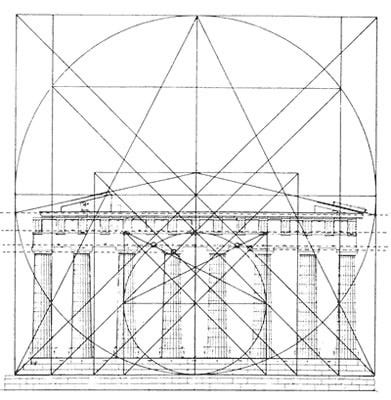Sacred Musical Geometry
Sacred Musical Geometry
Theo hunched over his desk, candlelight flickering against the yellowed pages of an ancient manuscript. He had spent weeks decoding the notations—arcane symbols interwoven with geometric diagrams, their meaning elusive but tantalizing. He was already familiar with 'Sacred Geometry'—the idea that the ancients had used sacred numbers to proportion their temples and art. Over centuries, this idea was extended to observing that much of the Beauty in the world comes from relatively simple mathematical patterns and proportions. The text claimed that Sacred Geometry could be extended to Music—that music, properly structured, could mirror hidden harmonies that underpin existence. It was not merely a philosophy; it was an assertion that music could be built upon math-like principles that echoed the structure of the Cosmos itself.

This discovery had consumed Theo. At first, he had approached it as an intellectual puzzle—an exercise in esoteric musicology. But the deeper he delved, the more he realized that this was no mere theoretical construct. The manuscript's author described sound lattices and harmonic proportions in ways that suggested they were not only artistic tools but also gateways to something greater.
And so, Theo resolved to test the theory in practice.
He began composing, meticulously arranging notes according to the principles outlined in the manuscript. But something felt... wrong. The structure was there, precise and crystalline, but the music lacked life. It was as if he had built an intricate cathedral of sound, yet the spirit had not entered, he set aside his work and went for a walk through the quiet streets of the village. He found himself at the river’s edge, watching the water flow between its banks. And it dawned on him: the river was not the river banks—its 'limitations'—yet without them, it would lose its shape, its purpose, its direction. He saw with sudden clarity—he had been treating structures as if they were the music, when really they were the 'river banks' through which the river of music could flow.

Returning to his study, Theo stopped trying to have the structures dictate every note. Instead, he played with patterns, not as absolute dictates never to be questioned, but as rules of a game he could contrive himself, and then allow the music to play within them. The patterns of Sacred Musical Geometry were no longer constraints; they were the invisible architecture that let the music unfold naturally.
It was like a bowl, which the artist fills with the wheat of human emotion. The nature of the bowl is partly dictated by the material from which it is made—likewise, human art is constrained by the laws of physics and human physiology. But humans can go further—we can take the clay, the bronze, and invent our own bowls — our own artistic constraints. We can create new bowls just for the sheer joy of it. And then we can create our unique emotional wheat to put in them.

Music needn’t be just the wheat of human emotion—it can be both the wheat and the bowl that contains it. The act of composition doesn’t have to be a choice between freedom and order. Rather, one could craft their own framework in which beauty can take shape. We can build the loom and weave the cloth. It's a dance between creating bowls with the mind and then filling them with the yearnings of the human heart.
A stillness settled over the room, a presence that felt both vast and intimate. The piece, now complete, was unlike anything he had ever written—both structured and free, disciplined yet alive. He named it “Song of Serenity.”
Theo felt he had entered a new realm. He knew that this piece was only a simple beginning — one must start somewhere. He could not wait to see where these ideas and yearnings would take him next.
Thank you for reading GrailHeart! (See my main site.)
Your thoughts and suggestions are always welcome—I personally respond to all sincere inquiries. (Spam is summarily banished to the outer darkness.) You can reach me through my contact form.
If you enjoyed this, why not subscribe? It’s free, and it helps support my efforts. Optional paid subscriptions are deeply appreciated—they help GrailHeart continue.
Looking for inspiration or unique gifts? Explore the fine wares at the GrailHeart Shoppe—your support means the world.
And finally, if this story resonated with you, share it with a friend:
May your journey be one of seeking, your trials be those of transformation, and your heart ever open to wonder.






